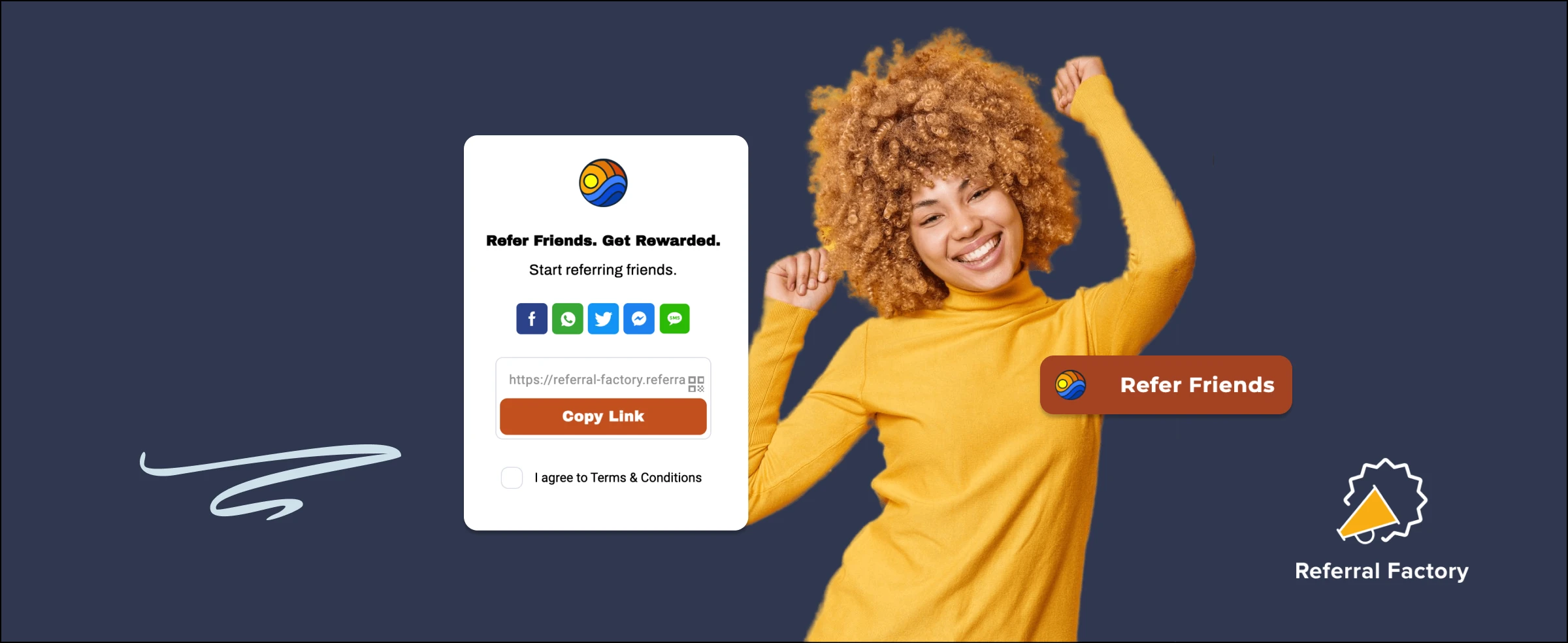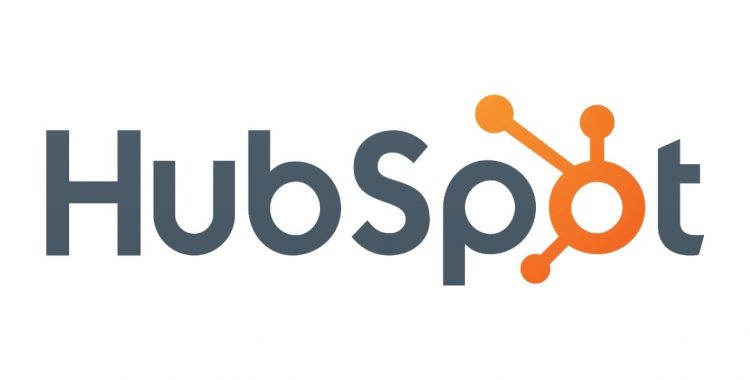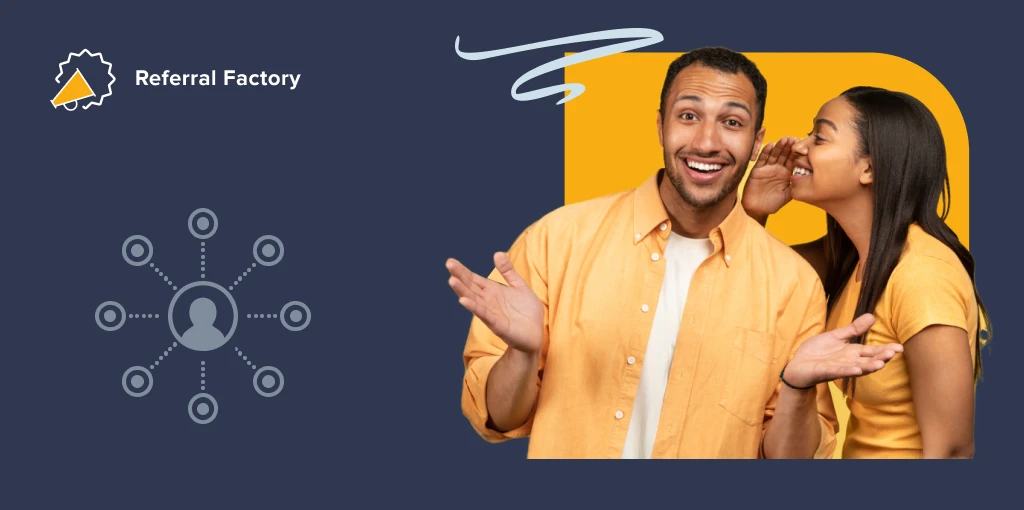Build A B2B Referral Program That Actually Works
While referral marketing is commonly associated with B2C businesses, the power of a well-crafted B2B referral program cannot be underestimated. B2B decision-makers often turn to trusted recommendations when making crucial purchase choices.
84% of B2B decision-makers start the buying process with a referral.
Salesforce Data
An excellent example of a B2B referral program that drove 3900% using referrals as the rocket fuel for their growth strategy is Dropbox.
Dropbox’s “Give A GB, Get A GB” referral marketing program incentivized current customers to refer their colleagues and friends to try Dropbox. This turned Dropbox customers into brand ambassadors, as they gave all their friends 1GB of free space, and in return, they got 1GB of free space too.
This is called a double-sided referral program and it’s the only way to do B2B referrals. It’s an efficient way for a sales team to boost their marketing efforts and add new customers.
The incentive for the person invited is crucial to get right because if there is a good incentive, the person referring will actually be more motivated to refer friends because they feel more like they are giving their friends something than selling your product or service. An existing customer would love to give offers and incentives to their friends. It boosts their ego and makes their friends happy too. The reward is only part of the motivation!
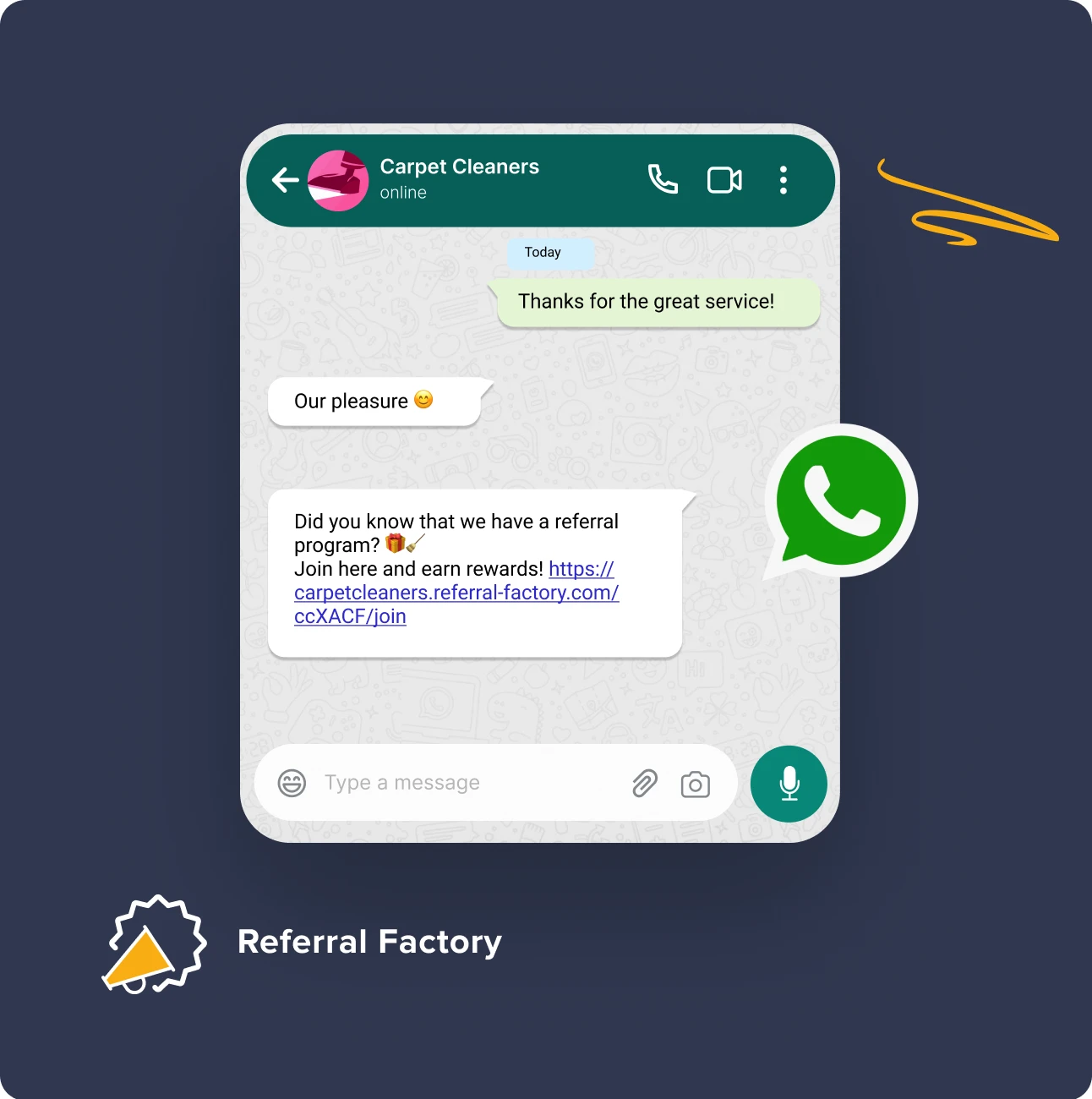
To build a successful B2B referral program, it’s essential to have a clear understanding of your target audience and what motivates and excites them. Consider what type of referral reward would appeal to your potential customers, whether it’s monetary, exclusive access to a product, or recognition within their industry. Additionally, make sure to create an easy and seamless referral process for both the referrer and the referred person, such as a referral link or a simple form to fill out.
By implementing a well-designed B2B referral program, you can leverage the power of word-of-mouth marketing and increase your customer acquisition and retention rates. Launching a referral program could turn your satisfied customers into brand advocates and boost your business’s growth. Plus, with easy-to-use referral program software becoming more and more affordable, it’s easier than ever for all kinds of businesses to get more B2B referrals!
Table of Contents
The Value Of a B2B Referral Program
A B2B referral program motivates customers to recommend your brand, product, or service to decision-makers at other businesses. This means that the leads they send your way already have a level of mutual trust for your business because the funnel they came through was a personal recommendation.

Today, consumers choose nearly 50% of service-providing businesses because of a recommendation.
Doug Plesh, 2003
In the B2C world, referral programs are already proven to be effective in generating leads. However, how does this play out in B2B? What does it mean for your business?
🚀 Referred leads are 2x more likely to convert than leads acquired through paid marketing channels. Source – Kirsty Sharman. Bringing in more high-quality leads [link] helps you scale up your incoming lead volume without having to scale up your sales and administration teams to manage more low-quality leads.
🚀 “Referred customers have a 16% higher lifetime value than non-referred customers.”. Source: Wharton School Of Business.
We believe that referrals can be an incredible marketing channel for B2B businesses. A large number of B2B businesses are already using Referral Factory and other referral marketing tools to generate new leads and use our software to grow their business and gain new customers.
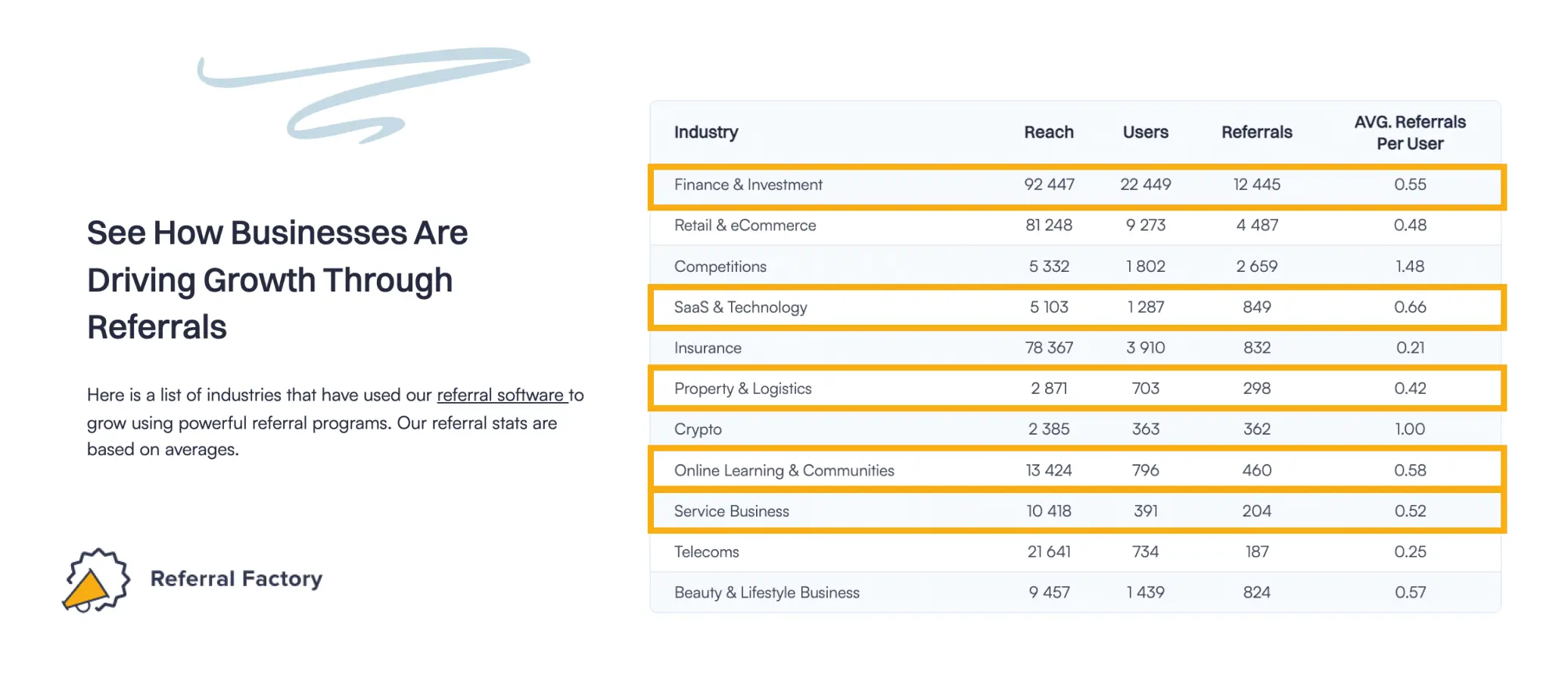
How to Build a Profitable B2B Referral Program
Let’s walk through a step-by-step guide for building a B2B referral program that works. Once you know the steps to take, you’ll be able to take advantage of this powerful B2B referral marketing channel 🚀
B2B Referral Program Incentives
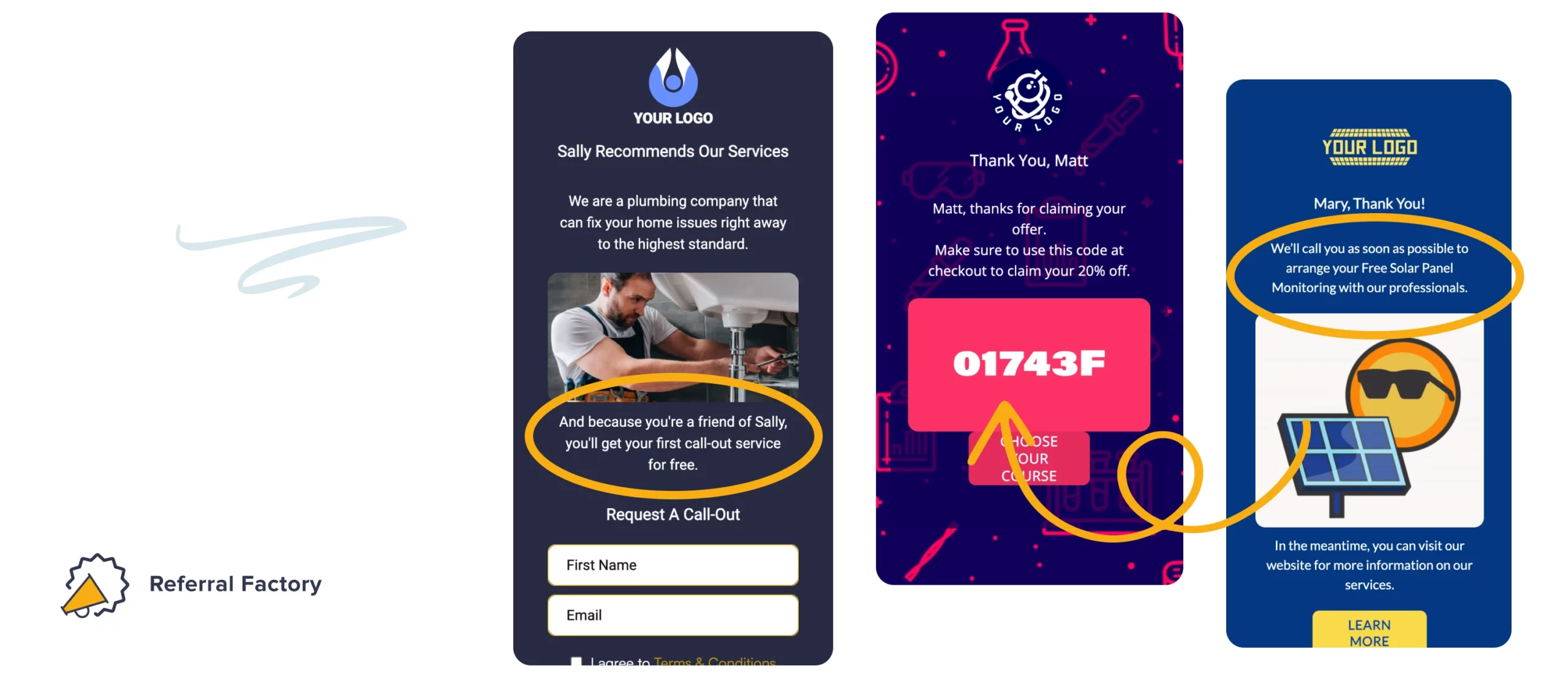
Getting the incentive right for the person being invited is essential, as it can significantly increase the person referring motivation to refer friends. When the incentive is attractive, the referrer feels like they are giving something valuable to their friends rather than just promoting your product or service. People enjoy providing offers and incentives to their friends as it enhances their sense of self-importance and brings happiness to their friends as well.
This is why B2B referral marketing programs almost always have to be double-sided. The entire program is not just built on customer acquisition but also on encouraging the right customers to become brand ambassadors for your product.
Start with the incentive for your double-sided referral program. Here are some ideas for the best incentives you can offer:
🎁 Get an expert consultation (free business review – that would usually be charged for)
🎁 Get free perks (like an upgrade of a free month)
🎁 Amazon gift cards (think of it as part of their sign-on bonus)
🎁 Get exclusive access to events, conferences, etc. (this only works if the access is truly exclusive)
🎁 Where it’s appropriate, a decent cash incentive, too, in the form of a starting discount.
Here’s an example of how an incentive works:
If you refer a business, and they (exclusively) get a 2-month free subscription, that would improve your social status and make you look good to this business and their network. Often this motivation drives people to make more referrals in B2B than getting a $200 reward.
Don’t get me wrong, the $200 is still a strong part of the motivation, but the person referring feels more comfortable making recommendations about you if they feel it’s more of a ‘win-win’ situation.
If you’re a SaaS company, you can also reward customers by offering them a trial period of your product’s paid version or premium version. This way, you’re showing customers how to extract the most value from your product while also having the chance to drive revenue on your end.
Once you’ve figured out your incentive, you’re one step closer to success. Make sure you draw inspiration from the examples above to reel in more clients to your brand.
Why Double Sided Referral Programs Work Best for B2B
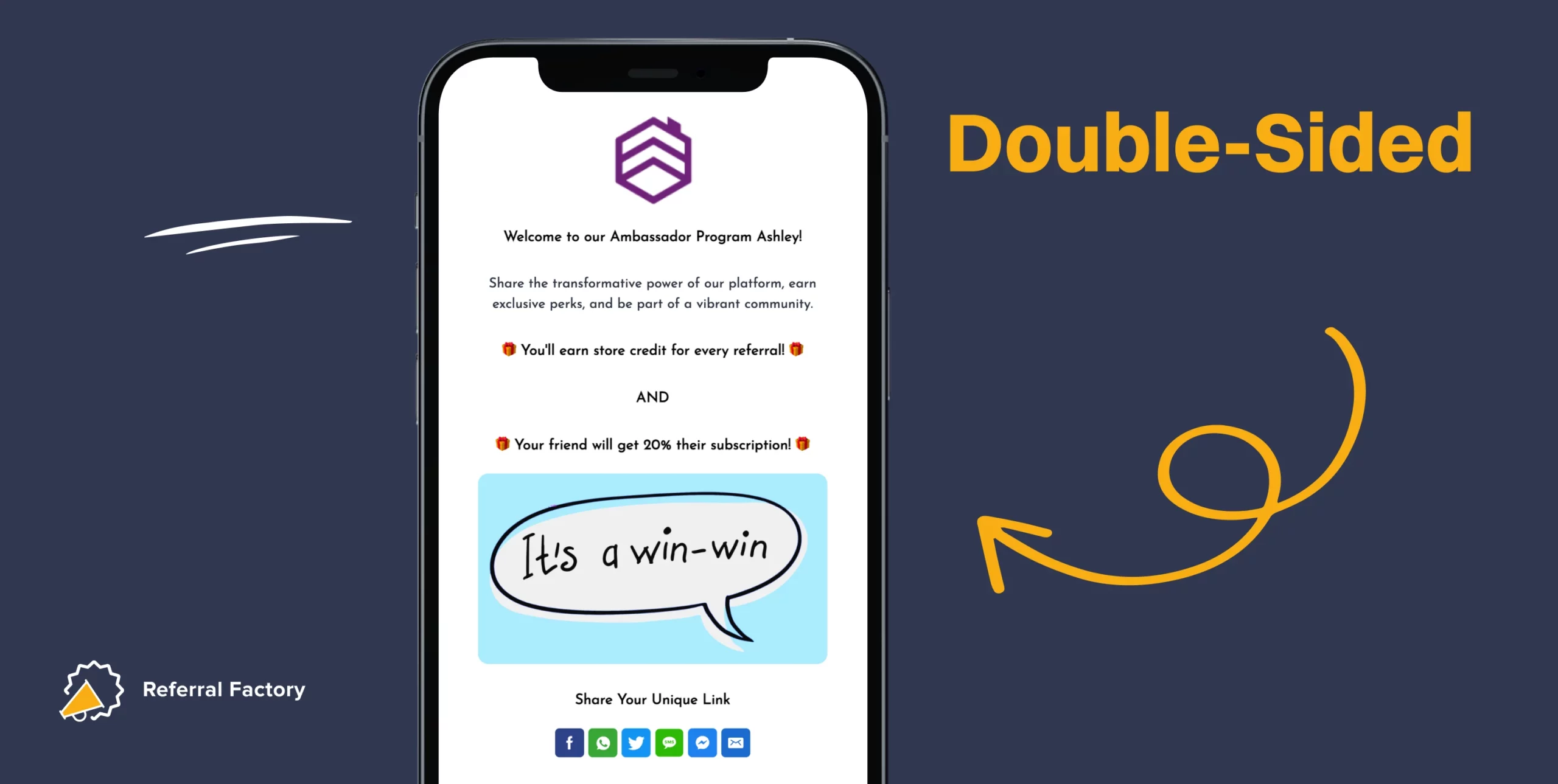
Double-sided referral programs are so named because they reward both existing customers and newly referred customers. These types of programs are highly popular in B2B, as they provide additional motivation for both parties to take the desired action. The person referring receives a reward and the chance to offer their friend an exclusive deal, while the person invited is presented with a unique offer from their friend, increasing their incentive to take immediate action.
Here’s an example:
The person referring gets $200 for every friend they refer who becomes an active customer of yours. And for the friend, they get a special deal that saves them money. It’s a win-win, don’t you think? As your existing customers refer new customers, your marketing influence also grows.
Referral Program Rewards

When building a B2B formalized referral program structure, the question always arises, who should receive the reward? A company, agency, organization, or individual?
It’s important to identify who you are rewarding in your B2B referral campaign.
In most referral sales campaigns, it’s a person. In order to motivate the person to refer, you need to reward them (vouchers, cash rewards, or coupons) and not the company they work for.
Referral programs, however, must offer rewards that make them appealing to existing customers.
You don’t have to reward in cold hard cash (though, tbh, this doesn’t hurt!). Think about what your business could offer that’s either low-cost, free or even just sneakily disguised as a reward.
For example:
If you want to reward the company referring: you could give a discount on your products or services (in the form of a coupon or credit).
If you want to reward the person referring: you could give a $100 Amazon gift card and send a personal mail to say thank you.
Marketing Your B2B Referral Program
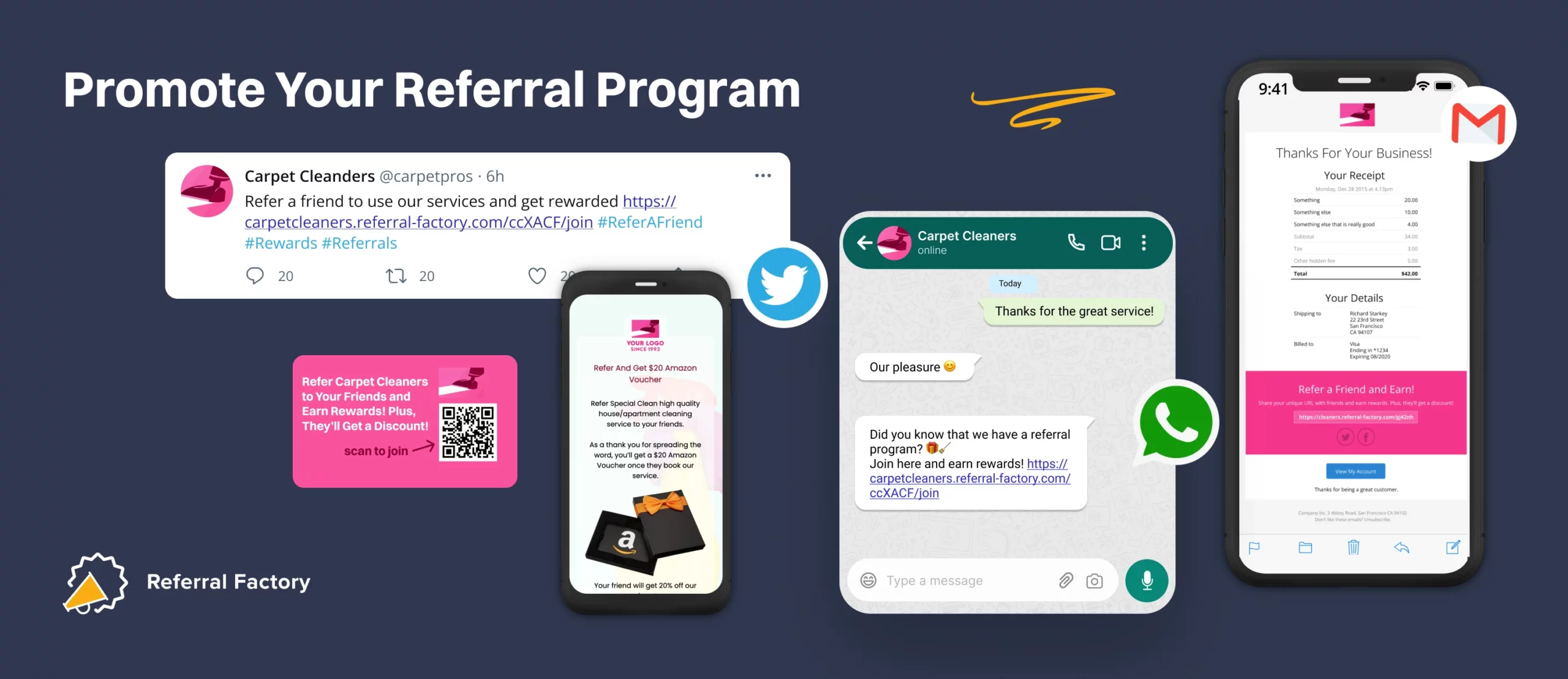
The biggest factor of your B2B referral marketing’s success is promotion.
The reason you have to put in more work to promote your referral program is that you often don’t have a consumer product that people log in to 10 times a day. You have to actively promote it, which means you need to do things like add a widget to your website promoting your referral program, sync your CRM contacts to generate their referral links, or a pop-up, and put it into a business process that people ask for a referral at this point.
Most referral program software will have these promotional tools built into their campaigns👇
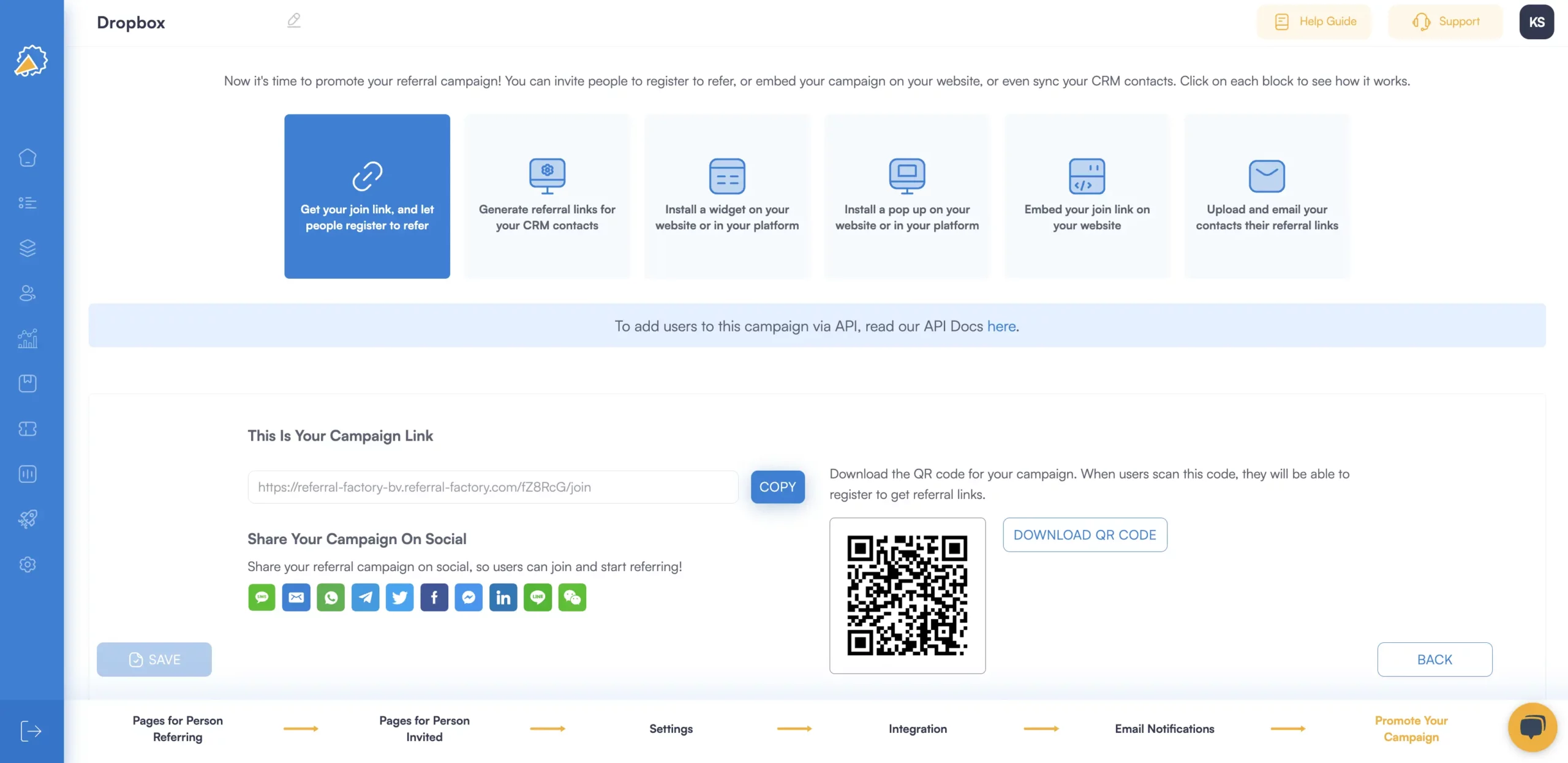
How to promote your referral program is very important, and you should consider how to include it in your business processes. For example, everyone in your company should put referral links in their signatures, where people can sign up to refer 👇

Here are a few more ways you can promote your referral program 👇
Use a widget in your website that allows turning your website traffic into referrals.
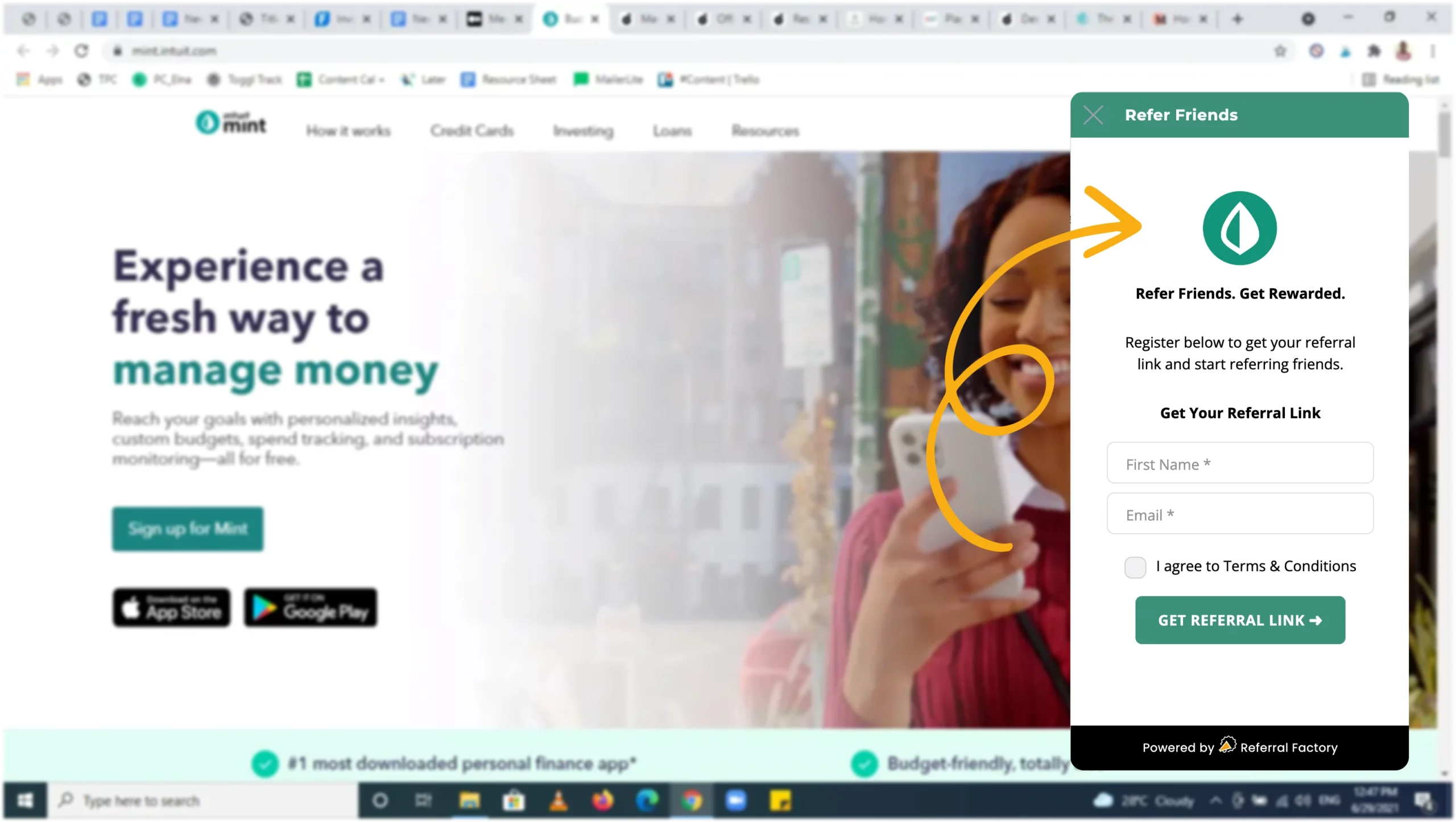
An easy way to get people to join your referral campaign is to include a widget on your website. Visitors can immediately start referring by clicking on the referral campaign widget! Place the widget on your homepage or any other page where you want to encourage users to join.
Sync your CRM contacts which allows you to generate a referral link for every one of your CRM contacts.
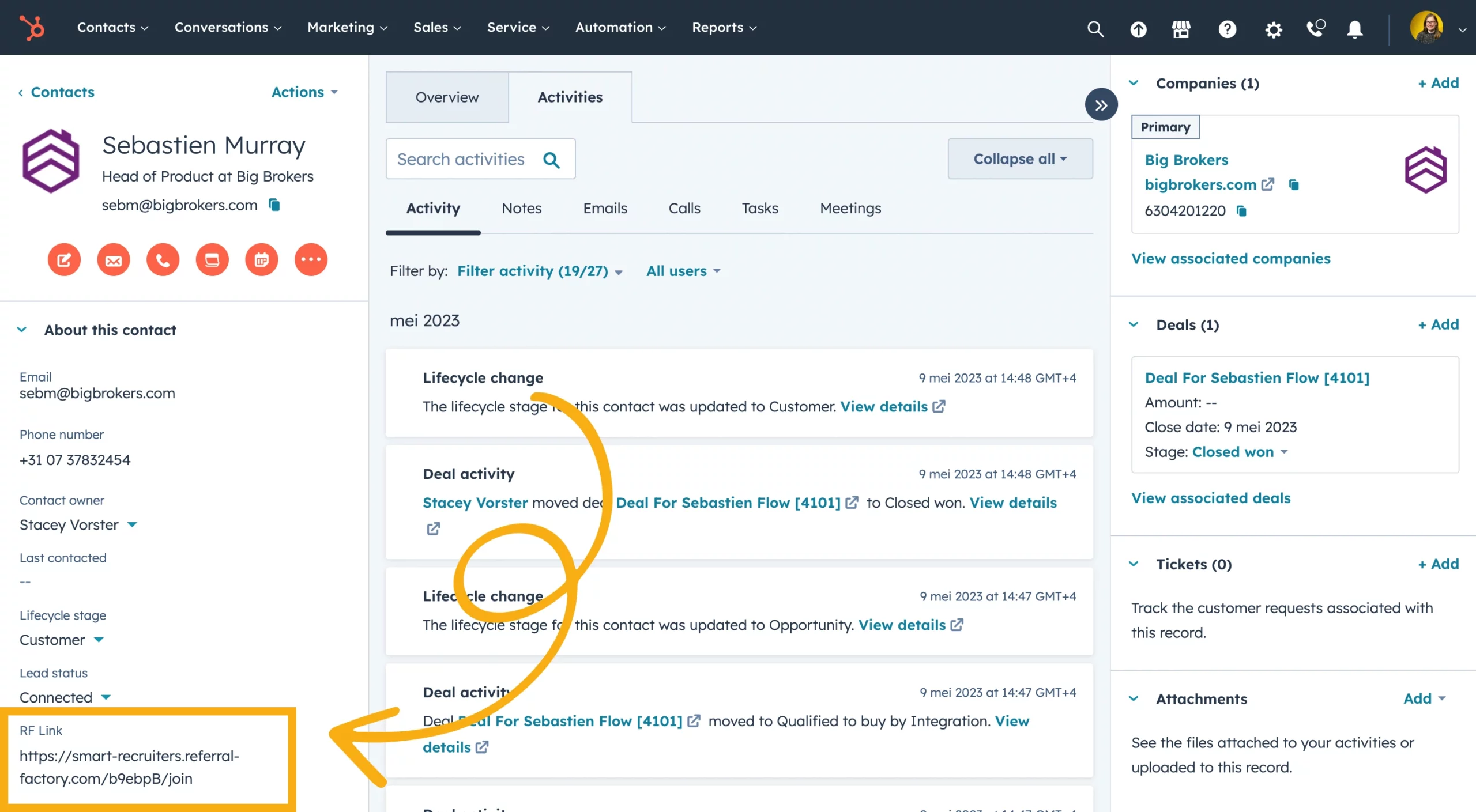
You can issue referral links to all your CRM Contacts or a specific list of contacts once you go live with your referral campaign. This will allow you to add those contacts to your campaign and call their unique referral links back to your CRM. Then, every customer interaction becomes an opportunity to refer a friend.
Put a Pop-up in your logged-in environment
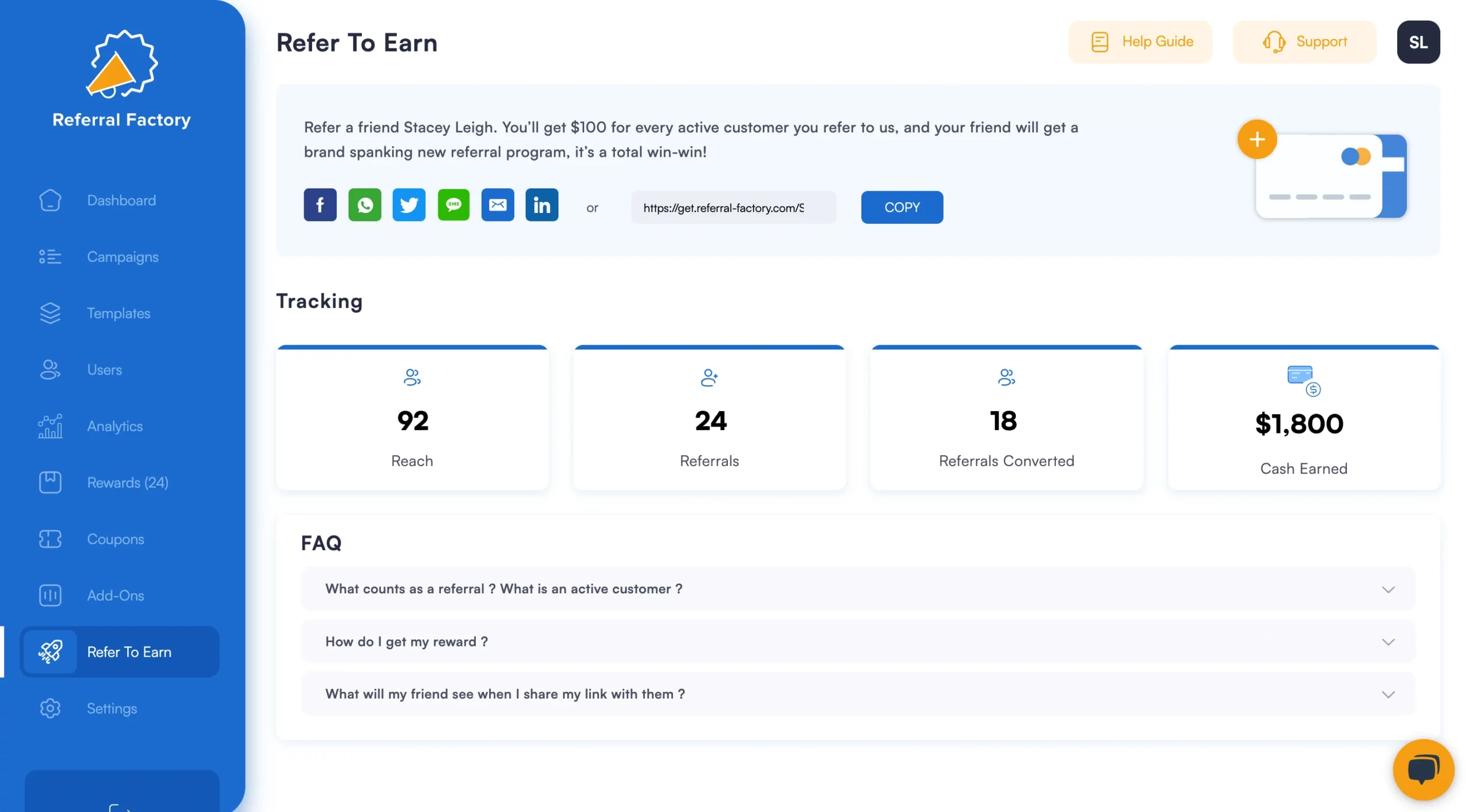
Add a referral campaign pop-up to your website after a positive customer experience. The pop-up can be added either during or after the order checkout. When customers feel positive about their purchase, they are more likely to recommend you to their friends and family.
Email All Your Contacts
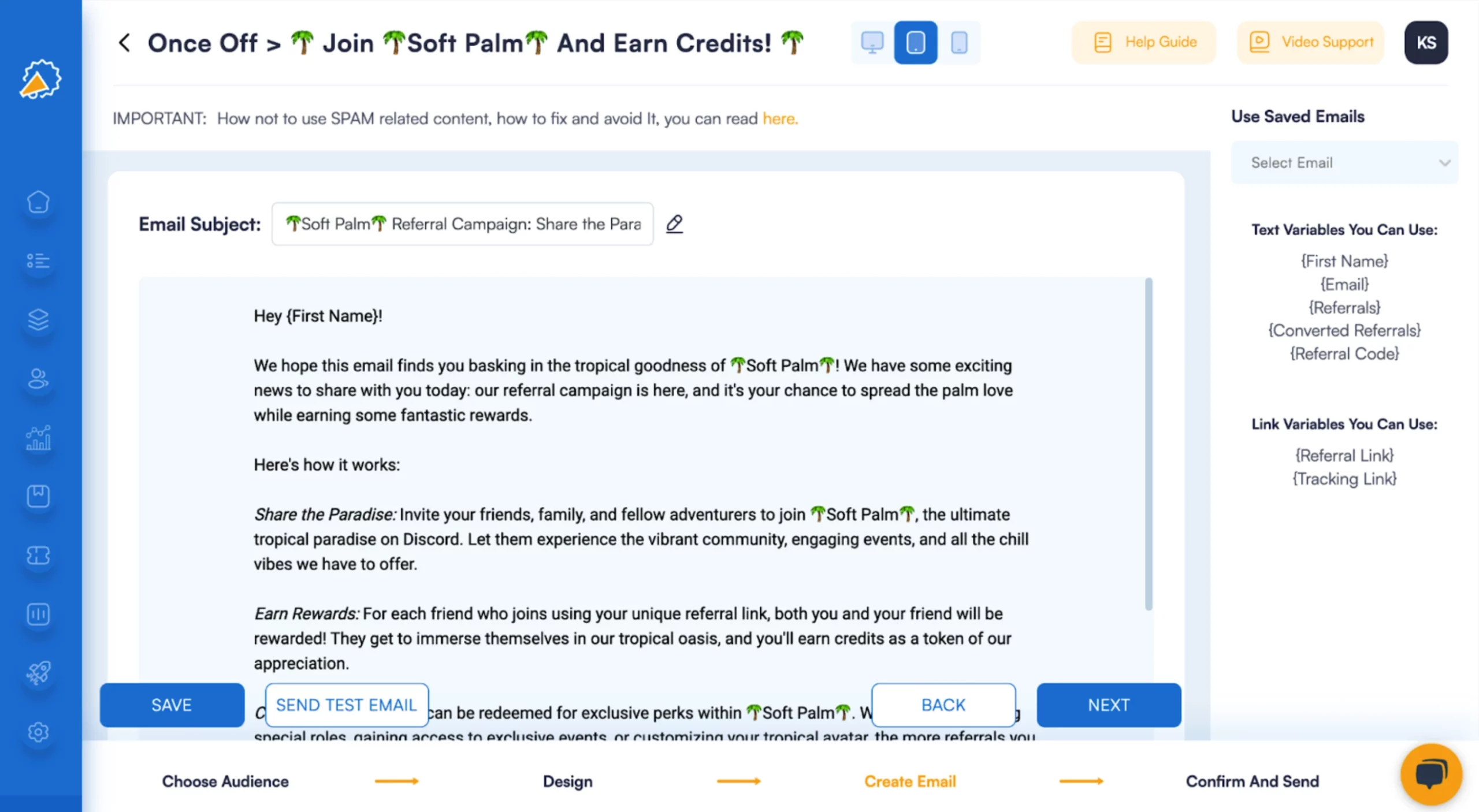
Upload your email database to Referral Factory, and automatically issue referral links to users by sending them an email announcing that they can now refer friends!
Check out this article for more referral campaign promotion ideas that will help you market and promote your referral campaign once it’s launched.
What types of businesses benefit most from B2B Referral Programs?
As someone with over 10 years of experience marketing B2B brands, I have learned that, when done right, a B2B referral program can be an excellent way to drive growth and sales. However, not all businesses are created equal, and some stand to benefit more from referral programs than others.
In my experience, most businesses that operate in niche markets or have a highly specialized product or service tend to benefit the most from referral programs. This is because they often have a loyal customer base who are passionate about their offering and are more likely to refer others who share their interests.
For example, a software company that creates niche accounting software for small businesses may have a loyal customer base who is passionate about the product and would be more than willing to refer other small business owners who are looking for a similar solution. Similarly, a company that specializes in custom-made luxury furniture may have a small but loyal customer base that could help spread the word about its unique products.
Another type of business that can benefit greatly from referral programs are those that offer high-value products or services. This is because customers who are making a big investment in a product or service are often more likely to seek out referrals and recommendations from trusted sources before making a purchase.
For example, a high-end real estate agency that specializes in luxury properties may benefit greatly from a referral program as their clients are likely to have a wide network of similarly wealthy and discerning friends and colleagues who may be in the market for a new property.
In conclusion, while all businesses can benefit from referral programs, those that operate in niche markets or offer high-value products or services stand to benefit the most. By creating a B2B referral program that targets these specific businesses and their loyal customers, you can increase your chances of success and growth. So, go ahead and issue those referral links to your best customers so that they can spread the word!
What tools can be used to track and monitor the performance of a B2B Referral Program?
Tracking and monitoring the performance of your B2B referral program is crucial for its success. You can only make data driven decisions to improve it if you have the right data to do so.
The good news is that there are a variety of tools available to help you track referral sales and monitor your referral program. Below I will outline some of the most effective tools for tracking and monitoring a B2B referral program.
1. Referral Software
Referral software is designed to help businesses track and manage their referral programs. These tools can help you automate the referral process, keep track of your referrals, and analyze your program’s performance. Think of it like a referral system in a box. Some popular referral software options include Referral Factory, ReferralCandy, Ambassador, and Extole.
You can find our full guide on this topic here 👉 Best Referral Software Tools To Use
We’ve also created this referral software comparison chart, ranking each tool by the average review score from real buyers.
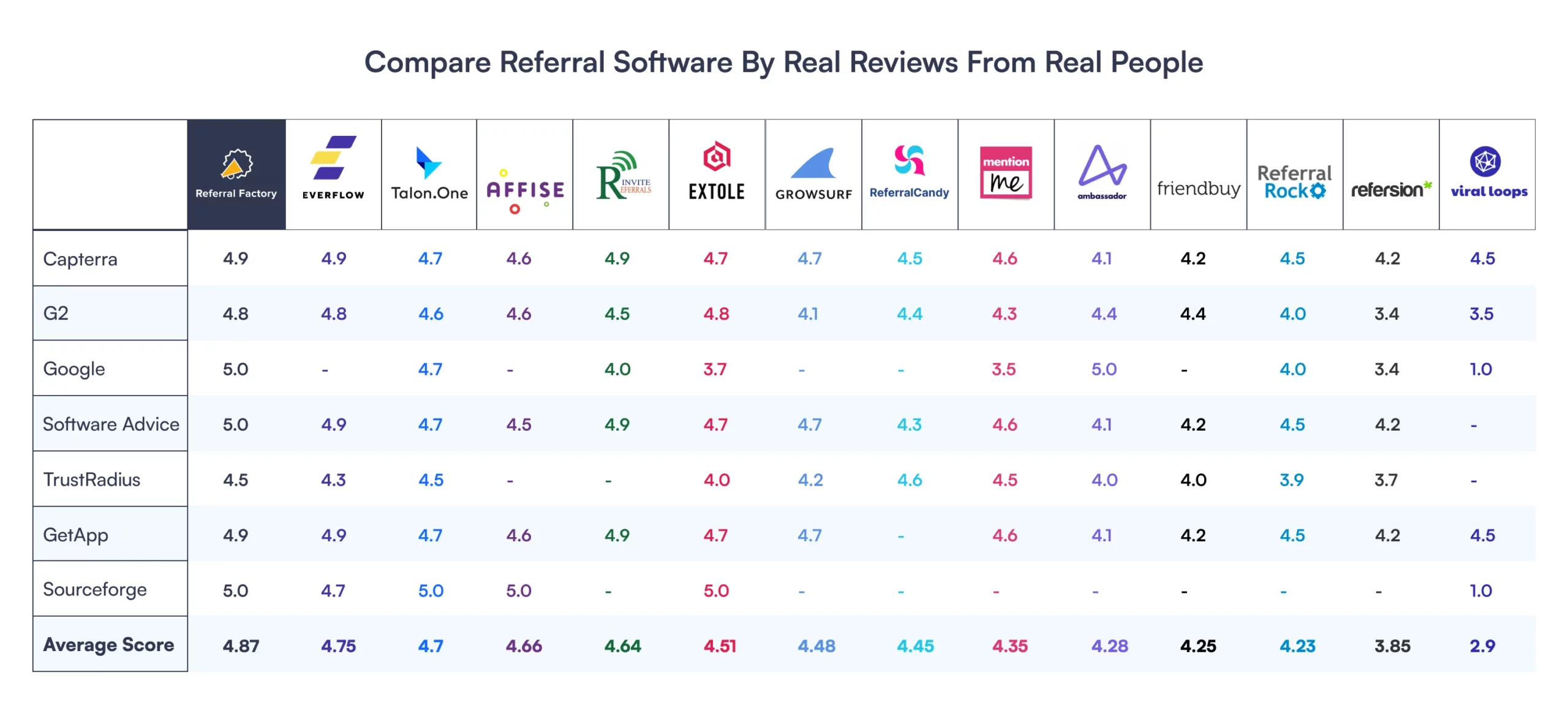
2. CRM Software
CRM software, or customer relationship management software, is another tool that can be used to track and monitor the performance of a B2B referral program. This type of software can help you manage your customer relationships, track customer interactions, and analyze customer behavior. Some popular CRM software options include Salesforce, Zoho, Pipedrive, and Hubspot.
Note that CRM software can help you track your referrals, but you should combine this with your referral program software (through integrations) so that you also have the features you need to build and promote your referral program.
3. Google Analytics
Google Analytics is a free web analytics tool that can be used to track website traffic, user behavior, and conversion rates. By setting up indivudial landing pages for each of your referrers, and then conversion tracking in Google Analytics, you can track the performance of your B2B referral program and analyze which people are referring the most leads your way.
Make sure your referral tracking is setup before you start, so that you can track the performance of your referral program as it grows. Here’s an example of an analytics dashboard you could try recreate:
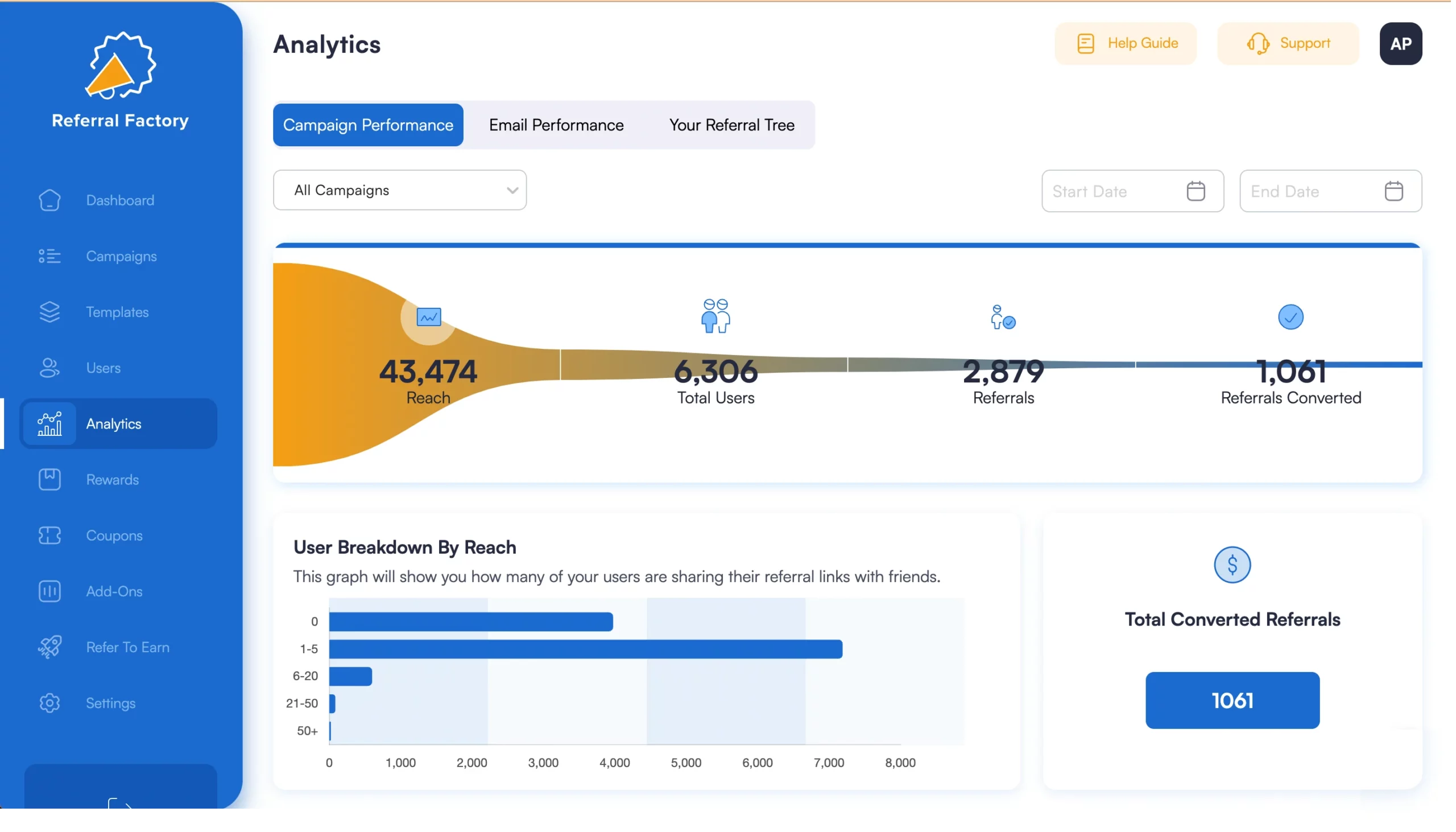
How do businesses ensure their B2B Referral Program remains compliant with relevant laws?
As much as we want to avoid this topic, businesses should stay up to date with relevant laws and regulations around incentivizing sales. This is especially true when it comes to a B2B formal referral program, which can be a valuable source of new leads and customers. But how can businesses ensure that their referral programs remain compliant with the law?
First and foremost, businesses must familiarize themselves with the relevant laws and regulations governing their industry and location. This may include data privacy laws, anti-bribery laws, and regulations around advertising and promotion. By understanding the legal framework in which they operate, businesses can take steps to ensure that their referral program is designed in a way that is compliant with these laws.
Secondly, businesses should clearly communicate the terms and conditions of their referral program to all participants. This includes both the individual making the referral and the recipient of the referral. These terms should be written in plain language and should clearly outline the rewards that will be offered for successful referrals, as well as any restrictions or limitations on who can participate.
You can get terms and conditions as part of your campaign setup in most referral software tools:
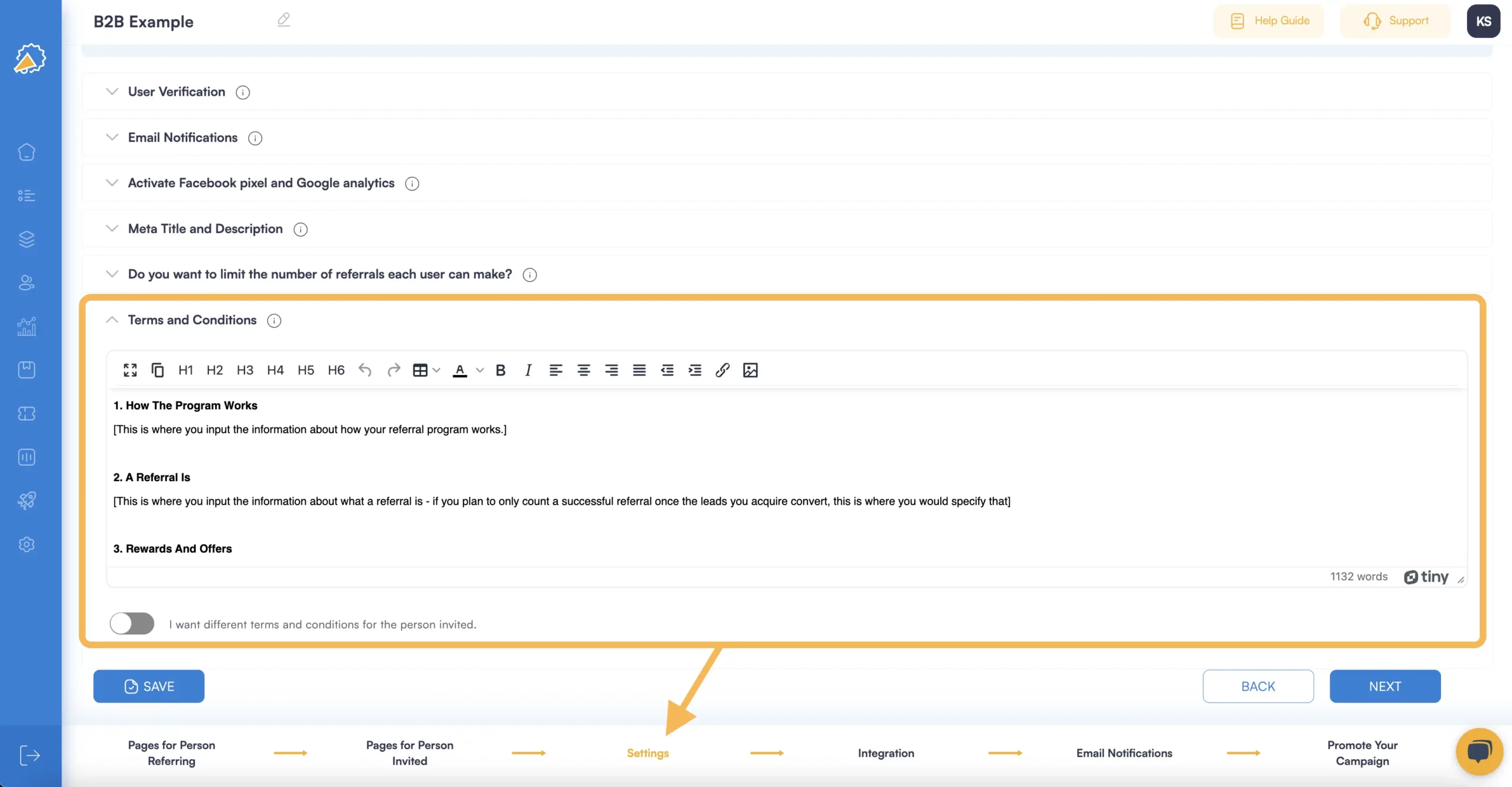
Thirdly, businesses should implement appropriate measures to track and monitor their referral program. This may include keeping detailed records of rewards and referral stats, conducting regular audits, and training employees on the importance of compliance. By putting these measures in place, businesses can quickly identify and address any potential compliance issues before they escalate.
One of the key takeaways is that businesses must take a proactive approach to ensuring compliance with relevant laws and regulations when operating a B2B referral program. By familiarizing themselves with the legal framework, communicating clearly with participants, and implementing appropriate measures, businesses can build a referral program that not only generates new leads and customers, but also operates in a way that is ethical and compliant. Remember, a successful referral program is based on trust, and businesses can only gain the trust of their customers by operating with integrity and transparency.
Therefore, invest time in familiarizing yourself with pertinent laws and regulations while crafting a B2B referral program that genuinely works for your business.

